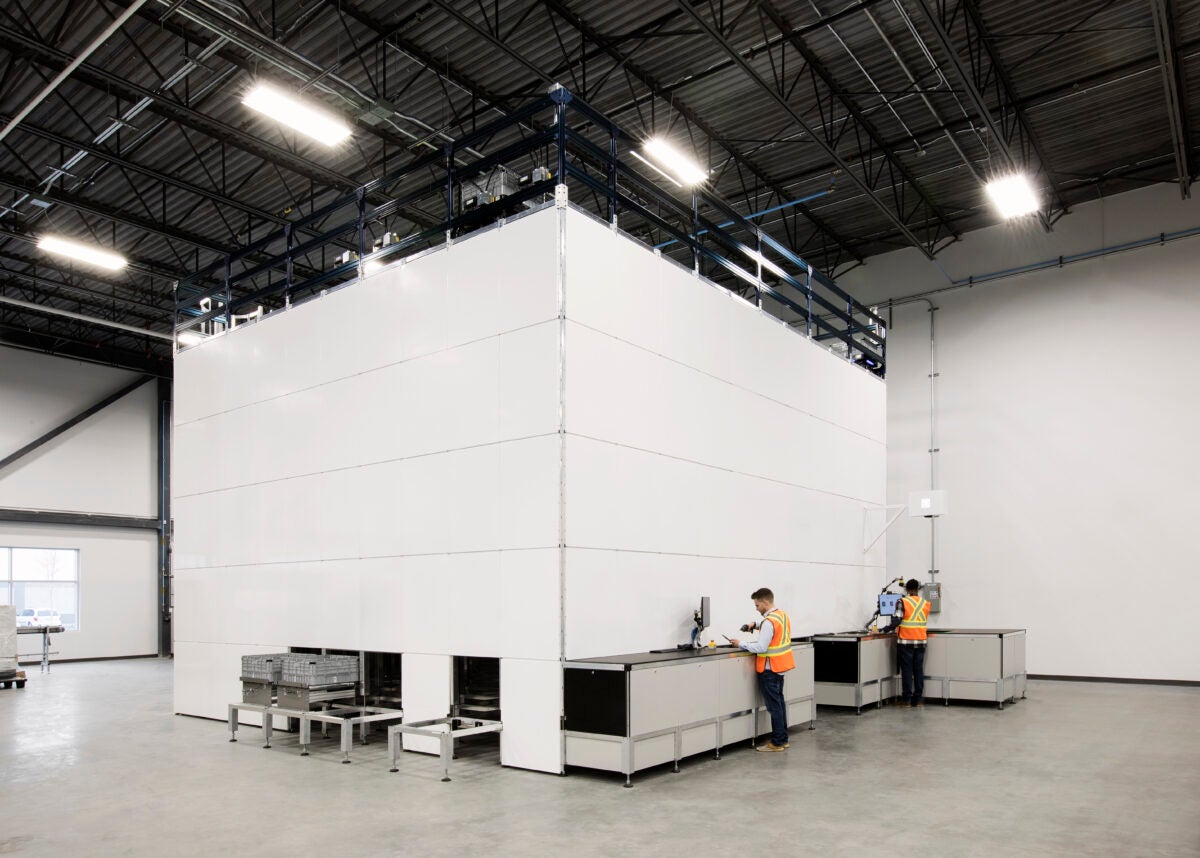CEO Scott Gravelle describes his unlikely journey from nursing to warehouse robotics
A veteran, a nurse and a construction worker walked into a bar. Actually, just one person walked into the bar: Scott Gravelle.
Gravelle can be described as a master of many trades, but his current passion may just revolutionize the supply chain industry — he’s the CEO of Attabotics.
Attabotics, founded in 2016, focuses on redesigning the layout of warehouses and fulfillment centers to use patented storage structures, navigated by robotic shuttles that can travel horizontally and vertically. According to the company, Attabotics can reduce a company’s warehouse needs by 85%.
The Alberta-based company has already gained partnerships with companies such as Microsoft, Accenture, and Synergy Design & Integration.
How Gravelle ended up in the supply chain industry is peculiar, given that he began his career with an education in nursing.

“I worked in [the] health care and new home construction industries for years. But when computer-controlled equipment came in and started dominating with manufacturing, I didn’t want to get displaced by it,” he said. “So I decided that I would get good at it. So I became like a Dr. Dolittle of [Computer Numerical Control] machines. You know, I can talk to the animals, so to speak.”
Gravelle, who does not possess a background in supply chain, was stuck with a “crazy idea” for 3D robotics.
“I spent two years trying to find a good reason not to do it because it scared the crap out of me — and I couldn’t find the damn reason,” he said.
Initially, Gravelle wanted to create enough storage capacity to add robotic arms to the end of a manufacturing line to store components. So he reached out to Kiva Systems to do just that — and was hung up on.
As it turned out, Kiva Systems had just been bought by Amazon for $775 million. Gravelle needed a new plan. Fortunately, he had another idea.
“So in looking at what was happening industrywide, just out of curiosity, I saw that almost everything was a derivative of a human-centric environment. In manufacturing, you don’t generally want to put robots and people together,” Gravelle said. “You want to create a cell that the robot gets to be the robot and that’s where it’s really efficient. And trying to mix robots and people together in manufacturing, historically it was challenging.”
This became the guiding principle for Attabotics — a redesigned environment can increase efficiency and new technology is given a dedicated space to operate.
According to Attabotics, the drastically reduced need for wide warehouse spaces will allow companies to move fulfillment centers back toward the cities, negating the need to seclude themselves to rural areas. Gravelle said this move will also reduce environmental impacts across the industry.
“If we’re a shorter distance to deliver goods to the consumer, not only are we increasing the experience but saving jet fuel, concrete, steel, diesel fuel puts a pretty significant dent in the overall environmental impact of modern cars,” he said.
Gravelle was inspired by organisms in nature, particularly leafcutter ants. While watching a nature documentary, Gravelle noted how the network of tunnels dug by the ants extended vertically instead of horizontally.

But to change a warehouse layout to a more vertical arrangement presents a new problem — human safety. That’s how Gravelle’s AI-driven 3D robotics came into play.
“Let’s get rid of lifting, the repetitive tasks, the pushing, the 15 miles of walking every day,” he said. “Let’s stop turning people into robots and allow them to, you know, do human jobs.”
According to Gravelle, the inclusion of robotics in the manufacturing environment would not decrease the amount of jobs available for humans. In light of an ongoing warehouse labor shortage, robotics may be the first step toward a safer warehouse workplace.
“We just want to create the most value that we can for the people that, you know, participate in the use of the system and experience this system,” he said.
Read the entire article here: https://www.freightwaves.com/news/attabotics-how-leafcutter-ants-inspired-supply-chain-innovation



